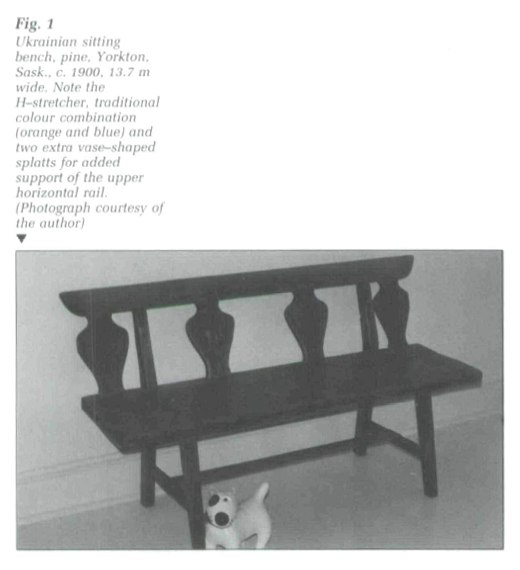Viewpoints / Points de vue
Ukrainian Antiques?
1 In the late 1970s it had become apparent in Canada that the supply of antiques was diminishing. Certain items that were readilv available in the 1960s and 1970s had disappeared. More-commercial items such as dry-sinks, flatback cupboards and six-foot tables became difficult to obtain. For this reason a number of antique dealers and collectors (especially those interested in East European folk art made in Canada) turned their attention towards western Canada to the handcrafted furniture and accessories of such ethnic groups as the Ukrainians. Of course these artifacts are not classed as antiques since they an; not a hundred years old. However, dealers in eastern Canada decided to overlook the wire and nail construction, a telltale sign of furniture made within the last hundred years. Frankly they had no choice. As long as the furniture was made of pine and had the country look, as opposed to the factory design of ash and oak furniture from the early twentieth century, it was marketable.
 Display large image of Figure 1
Display large image of Figure 12 There are two distinctive groups interested in acquiring Ukrainian artifacts: dealers who purchase the furniture and refinish it so that it resembles eastern pine furniture; and folk-art collectors who are not concerned with the age, the wood used or the construction, but with the surface treatment including the occasional carving. The main interest is, of course, the bold use of colour. The furniture forms are quite often unusual and the construction is crude, but the use of colour is sensational. Bright, often primary, colours are arranged in combinations of red and green, orange and green, and blue and red. These combinations are most often found on cupboards, tables, sleeping benches and wall benches. It is this use of colour that folk-art collectors prize most highly.
3 When I first began to sell Ukrainian folk art in the mid-1970s, few people were interested. Most Canadian collectors did not feel that the Ukrainian artifacts would improve or enhance their collections. There are those who would not concern themselves with any items made after 1860, labelling these pieces as "late." Today, however, there is a growing number of collectors who are knowledgeable about the society that produced these artifacts. They appreciate the form, function and decorative surface treatment. Many are concerned with the well-being and the survival of this art form. Indeed a number of collectors present Ukrainian folk art as the pivotal expression of their collection.